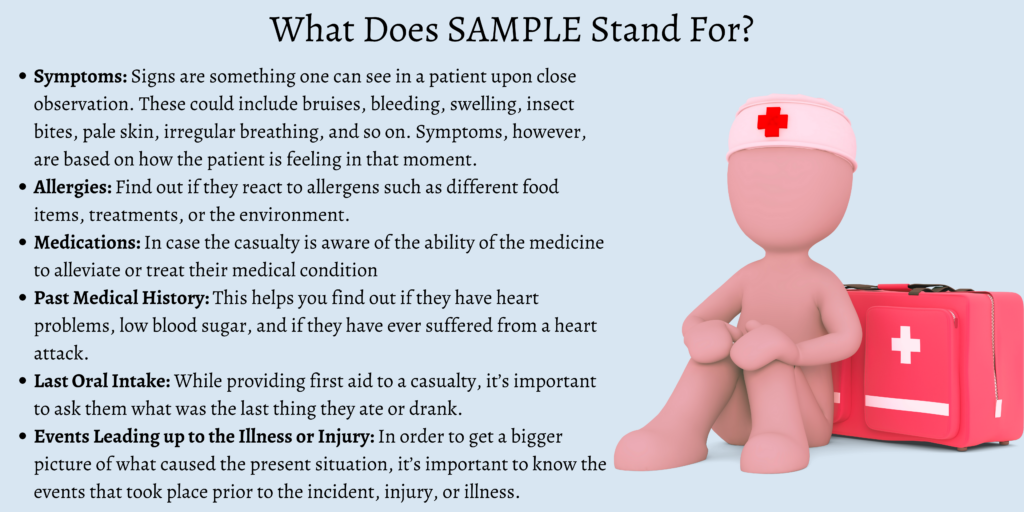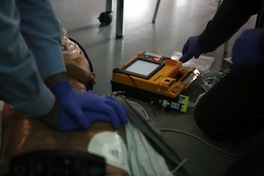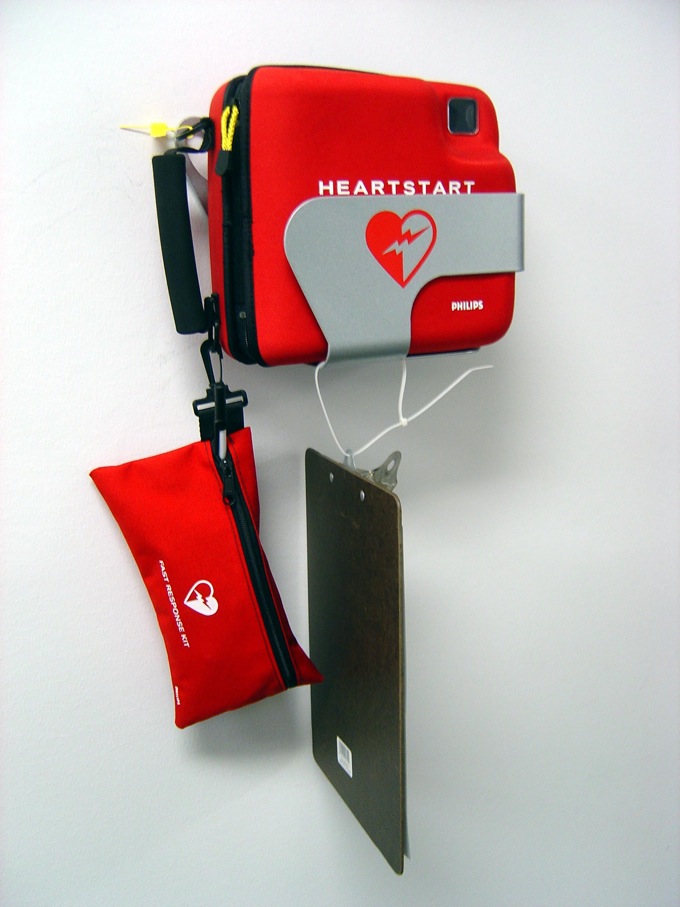What does SAMPLE stand for in first aid?
When individuals receive training to become first aiders, their training enables them to possess sufficient knowledge of first aid. This includes the competency to identify illnesses and assess the extremity of injuries that require a certain type of treatment.
Once a first aider is able to perform the above-mentioned task, he/she can determine the solutions that will be the most appropriate for the casualty in question and decide whether the emergency services need to be called right away or not.
As a first aider, the best way for you to tackle an emergency situation is by asking the right questions and deriving all the vital information from the casualty. And to make the job easier, a sure-fix method as a first aider you can apply is the SAMPLE method.
In this article, we will be discussing what SAMPLE stands for in first aid and how a first aider can use it.
What Does SAMPLE Stand For?
SAMPLE is one of the first aid acronyms taught during basic first aid training and courses related to lifeguarding. In order to provide the necessary treatment and services, it is crucial for a first aider to be aware of the steps involved in performing SAMPLE.
Here’s what the acronym stands for in first aid:
Symptoms
Signs are something one can see in a patient upon close observation. These could include bruises, bleeding, swelling, insect bites, pale skin, irregular breathing, and so on. Symptoms, however, are based on how the patient is feeling in that moment.
The symptoms of a patient might include nausea, pain, dizziness, chest pain, blurred vision, and fatigue.
When a patient says that they feel lightheaded or dizzy, a good question to ask them would be if it’s normal for them to feel this way.
If they answer by saying that they often feel slightly dizzy when they stand up too fast, then there is probably not much to worry about. Although, it should be concerning if this situation has been going on for a while.
Allergies
The next category of questions to ask a patient during first aid is related to their allergies. Find out if they react to allergens such as different food items, treatments, or the environment. Certain examples of this scenario could be if you come across a patient who is allergic to wasps. You can ask them if they have been stung before. If someone is allergic to nuts, ask them if they have consumed nuts recently and what they usually do when they face an allergic reaction.
Medications
Ask the casualty if they take any prescription medicines since this could help in determining if their current medical conditions have possibly led to the present illness or injury.
In case the casualty is aware of the ability of the medicine to alleviate or treat their medical condition, it could make the physician’s job easier.
Once they respond by saying that they do take a particular medicine regularly, you can ask them what it’s for, if they need it right now, and when was the last time they took it.
Past Medical History
Learning about the casualty’s relevant medical history can help you decide the appropriate first aid to provide to them. This helps you find out if they have heart problems, low blood sugar, and if they have ever suffered from a heart attack.
You can also ask whether their family members have a history of diabetes, hypertension, or cardiac arrest, among other things.
If they have an injury, ask them if this is a new injury or whether an existing injury has been aggravated. Also, inquire if they have had surgery in the injured area or not.
If the casualty is dealing with an illness, ask them if they take medicines for it, if they have had it before, and if a current injury is connected to the illness.
Last Oral Intake
While providing first aid to a casualty, it’s important to ask them what was the last thing they ate or drank. It could also be that what they consumed was the reason behind their illness or accident.
Events Leading up to the Illness or Injury
In order to get a bigger picture of what caused the present situation, it’s important to know the events that took place prior to the incident, injury, or illness. This gives you an idea of how urgently the emergency services should be responding to the situation or how fatal the condition actually is.
Conclusion
Noticing the real problem in a casualty can help a first aider make the best possible decision in the given moment and take the next step accordingly. This cannot be done without knowing the type of questions to ask them.This is where the art of questioning comes into play, and SAMPLE is one of the most efficient methods in this department. Every time you deal with a casualty as a first aider, follow the SAMPLE method to see what the reason behind a person’s current injury or illness could be, and call an EMT accordingly.
Want to learn more about first aid? Why not sign up to one of our free online first aid courses!






